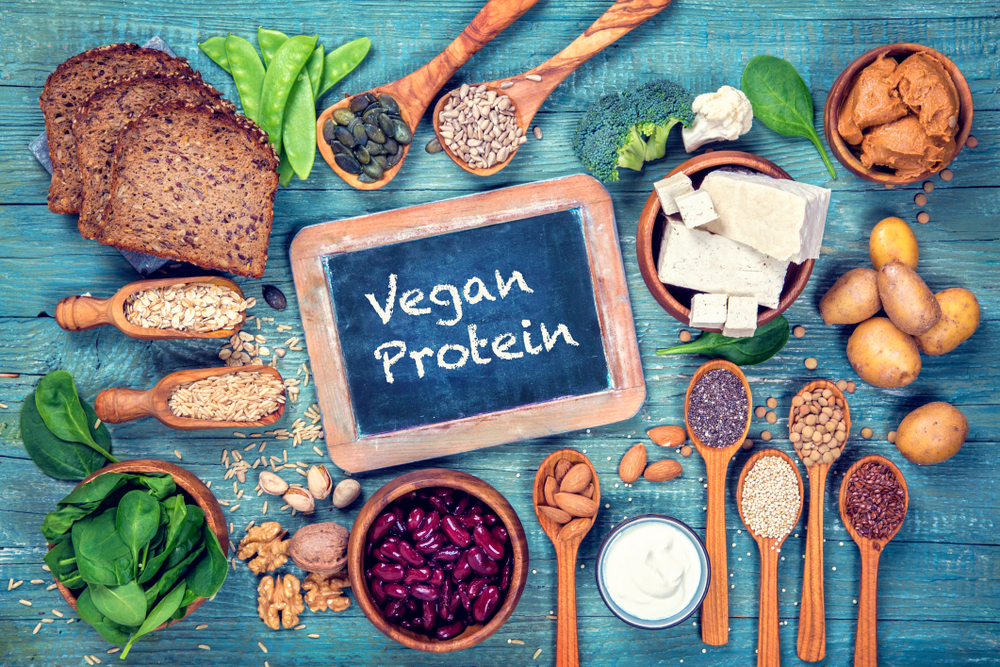Protein is a topic of conversation that frequently comes up for people switching to a vegan diet.
Where do vegans get their protein? Is it possible to get enough protein from plants? Is this protein as good as animal protein?
And as we become aware of the cruelty and environmental destruction associated with animal farms, more people are considering a plant-based diet. Sometimes the confusion about protein is the only factor stopping them from making the switch.

Vegans get their protein from consuming plant-based foods that have a high protein content. These foods include lentils, tofu, chickpeas, soy products, and various nuts and seeds.
However, while you’ll find plenty of plant-based sources of protein, getting the right balance of nutrients can be tricky.
In this article, we’ll explore how vegans can ensure they’re getting enough protein and list a few plant-based sources to obtain it from.
Getting Enough Protein on a Vegan Diet
As mentioned, getting adequate protein isn’t an issue, but it can be confusing to source if you aren’t armed with the proper knowledge.
Protein comprises amino acids, of which eleven are non-essential amino acids (produced by the body), and nine are essential (can only be obtained from food).
For a wholesome protein profile, you want to ensure you include the nine essential amino acids in your diet. And here’s where things can get a little complicated.
For example, cereal-grain proteins are considered a rich source of protein. And while they have a high protein content, they tend to be low in lysine, an amino acid that helps in the formation of connective tissue.
Luckily, lentils are rich in lysine, and including them in your diet can ensure you’re getting protein in a wholesome way.
Most vegan sources of protein are rich in certain amino acids while lacking others. By balancing your diet with different plant-based foods, you can ensure a steady supply of all nine essential amino acids.
Plant-Based Protein Sources
For those who find researching a lengthy task, here are a few plant sources of protein that contain all nine essential amino acids in significant quantities.
1. Quinoa
Quinoa has a crunchy texture and can be used to replace rice, millets, or any grain you consume on a daily basis. It’s got a crunchy texture and offers more magnesium, fiber, iron, and zinc than other grains.
Quinoa is a complete source of protein and provides up to 8 gms of protein in a single cup (185 gms). While this may not seem like a whole lot of protein, quinoa also gives you up to 5 gms of fiber per cup, helping your body digest and absorb the protein.
2. Soy Products
Tofu and tempeh are soy products that have been popularly used as meat replacements, thanks to their meaty texture.
Tofu comes in various consistencies, including extra-firm, silken, and soft tofu. It’s the ideal product to use in multiple recipes as it happens to absorb the flavors you add to your cooking readily.
Tempeh is a lot chunkier, with a thicker, chewy texture. It’s a rich source of complete proteins, with 85 gms of tempeh giving you up to 11 gms of your daily protein requirement.
It’s essential to consume enough fiber with soy products to ensure that the protein is easily digested and absorbed by the body.
3. Rice and Beans
If you’re looking for a simple yet wholesome source of protein, it would be best to combine rice and beans as each makes up for the nutritional deficiencies of the other.
Rice is rich in methionine but low in lysine, while most beans are low in methionine and high in lysine. Aside from these two nutrients, rice and beans contain the other essential amino acids in sufficient quantities.
The best part is that they’re easy to prepare, allow for a more diverse range of dishes, and can be consumed on an everyday basis.
Protein is Everywhere!
It’s worth mentioning that most plant sources contain a combination of essential amino acids in varying quantities.
So by consuming different kinds of plant foods, you can build a wholesome protein profile and ensure you’re getting adequate amounts on a vegan diet.